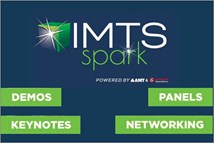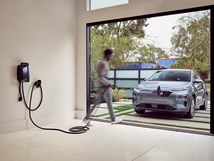New Toyota JV Targets Fuel Cell Trucks in China
Commercial vehicles could be the right application for fledgling technology
Toyota has big plans for fuel cell trucks. So does China.
So, it’s no surprise that the Japanese carmaker is ramping up its efforts in the market.
Last year, Toyota opened a fuel cell r&d facility in Beijing and began supplying fuel cell components to several Chinese companies for use in buses and other commercial vehicle applications.
New R&D Joint Venture
Now Toyota has formed a joint venture— United Fuel Cell System R&D (FCRD)—with five Chinese companies to further develop and commercialize the technology. Toyota owns 65% of the company, while integration specialist SinoHytec holds 15%.
The remaining 20% is evenly split among four Chinese vehicle makers:
- BAIC Group
- Dongfeng Motor
- FAW
- Guangzhou Automobile
Toyota previously has worked with FAW and Guangzhou on fuel cells. The new partnership, which is capitalized at 5 billion yen ($46 million), will focus on improving driving performance, fuel efficiency and durability, as well as reducing costs.
Why it Matters
While fuel cell-powered cars have failed to gain traction over the last decade—and are unlikely to do so anytime soon as automakers increasingly focus on pure electric vehicles and hybrids—the technology could find its niche in commercial vehicles.

Toyota-Hino concept fuel cell truck. (Image: Toyota)
Trucks and buses are well suited for fuel cells because they typically have relatively short fixed daily routes and return to a common facility, where they can be refueled on site overnight. This alleviates concerns about the shortage of hydrogen stations until a supporting infrastructure is created.
Fuel cell vehicles also have a longer driving range than EVs. And it takes about the same time to refuel a hydrogen tank as it does to pump gasoline or diesel.
China, South Korea Lead the Way
Currently, there are only about 1,500 fuel cell vehicles (mostly buses and trucks) on the road in China.
But the government has set an aggressive goal to have 1 million such vehicles on the road by the end of the decade. To support the effort, the country is starting to develop an infrastructure for hydrogen production, storage, transportation and refueling.
China also is attracting a lot of startup companies and investments in fuel cell technology. One example: China National Heavy Duty Truck Group has committed $7.6 billion to manufacture fuel-cell vehicles in the country’s Shandong province.
South Korea also is targeting fuel cell vehicles. Last year the government announced plans to build 6.2 million fuel cell-powered vehicles, open 1,200 hydrogen fueling stations and hike annual production of hydrogen to 5.3 million tons by 2040.
Partnerships Rule
In addition to the China joint venture, Toyota has separate partnerships with Hino and Kenworth to develop fuel cell-powered trucks. Such collaborations allow companies to share costs and accelerate development efforts.
Other companies have the same idea. Daimler and Volvo Group formed a joint venture in April to develop fuel cell systems for commercial vehicles. This followed a similar agreement earlier this year between Honda and Isuzu.
Hyundai/Kia also has big plans, with a goal of delivering 500,000 cell cars and commercial vehicles worldwide by 2029. The South Korean company is part of a consortium—along with Toyota and Arizona startup Nikola Motor, which is developing its own fuel cell truck—that aims to standardize components for fuel cell-powered big rigs.
RELATED CONTENT
-
Increasing Use of Structural Adhesives in Automotive
Can you glue a car together? Frank Billotto of DuPont Transportation & Industrial discusses the major role structural adhesives can play in vehicle assembly.
-
On Electric Pickups, Flying Taxis, and Auto Industry Transformation
Ford goes for vertical integration, DENSO and Honeywell take to the skies, how suppliers feel about their customers, how vehicle customers feel about shopping, and insights from a software exec
-
The Koenigsegg Jesko Has An Amazing Engine
It is hard to believe that this is a vehicle in “serial” production with such extraordinary powertrain performance








